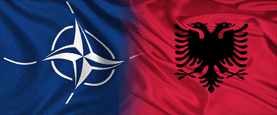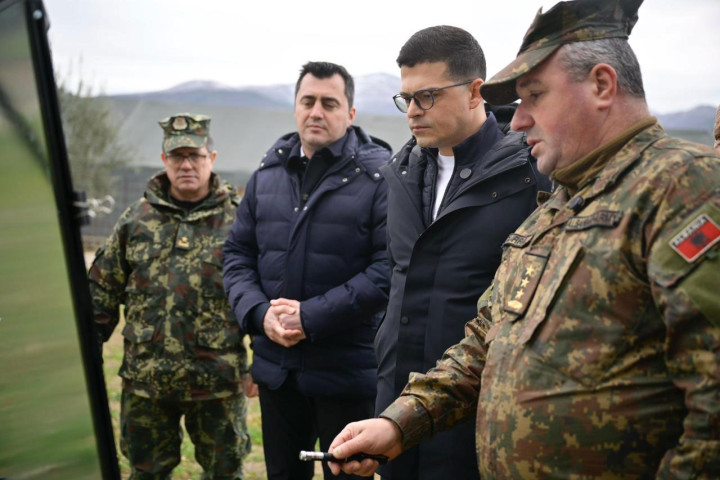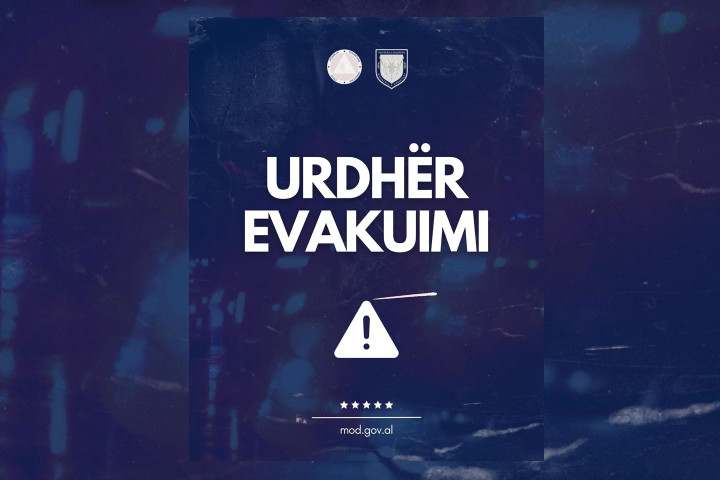History of NATO-Albania relations
 June 1992, Albania applies and is officially accepted by the Council of the North Atlantic Cooperation (NACC).
June 1992, Albania applies and is officially accepted by the Council of the North Atlantic Cooperation (NACC).
December 1992, marked the first official visit by the President of Albania, Mr. Sali Berisha, at the NATO headquarters to meet with Secretary General of the Alliance, Mr. Manfred Werner.
19 March 1993, for the first time, NATO Secretary General, Manfred Werner visits Albania.
May 1993, Albania was accepted member of the North Atlantic Assembly.
January 1994, NATO issued the invitation document of the Partnership for Peace, defining it as a direct program and a practical mechanism to transform relations between NATO and non member countries (not members), mainly of the ‘Eastern Bloc’, which were not included under the “security umbrella” of NATO’s Article 5.
23 February 1994, The President PhD Sali Berisha signed the PfP Framework Document officially rendering Albania member of this initiative (PfP).
20 April 1994, the Albanian Parliament ratified the basic document of PfP.
03 June 1994, the North Atlantic Association was founded in Albania, which was attended by about 80 intellectuals from various fields.
22 September 1994, Albania submitted to NATO the Albania presentation document in PfP, where Albania declared capabilities and framework of cooperation as a partner country.
25 January 1995, was approved the first Individual Partnership Programme (IPP) between Albania and NATO.
09 June 1995, Albania was officially involved in the Planning and Review Process of the Partnership for Peace (PARP), a process which creates the conditions to acquire and apply the experience of NATO in the field of defence planning. By participating in the PARP cycles, Albania began sharing information with NATO and obtaining a detailed expertise on issues of a wider spectrum, including the defence policy, development of the democratic control on the Armed Forces, over the forces that Albania put at the disposal of NATO/PfP as well as the respective financial plans.
In 1996, for the first time NATO launched an ambitious study process about the possibility of enlarging the Alliance, based on the 5 principles for enlargement (NATO).
07 July and 11 October 1996, at NATO headquarters, two sessions of individual NATO-Albanian dialogue were held.
30 May 1997, in Sintra, Portugal, Albania attended the first meeting of the new body that replaced the NACC, and was called Euro-Atlantic Partnership Council (EAPC).
Of special importance was the willingness expressed by the Albanian side in this meeting, for NATO to contribute to the delicate process of reconstructing the Albanian army under contemporary standards and concepts.
March 1998, the Alliance turned into one of the main points of focus and coordination of the political and military efforts of the international community to resolve the Kosovo crisis, including the option of the use of force.
March 1998, the Albanian side presented to NATO countries its attitudes and concerns after the deterioration of the situation in Kosovo.
June 1998, responding to the dramatic developments in Kosovo, NATO Defence Ministers decided to adopt a series of concrete, measures among which organizing a joint air exercise of NATO over Albania and Macedonia, as well as the opening NATO/PfP office in Tirana.
NATO’s air campaign against Serbia, to stop the criminal campaign of ethnic cleansing undertaken by Milosevic regime, represents a milestone in the history of relations between Albania and the Alliance.
In 1999, during the Kosovo crisis, Albania offered its airport facilities to help NATO’s operation in Kosovo and it can be said without hesitation, that Albania, de facto, reacted and acted as if it was a NATO member.
31 August 1999, NATO creates KOMMZ (W) (Durres) to further support its mission in Kosovo. Its headquarters was integrated into the KFOR structure and it was considered as the first operational NATO force deployed in Albania.
After the Washington Summit, 23-24 April 1999, Albania along with 8 other countries (later also Croatia) was accepted as an aspiring country to NATO membership.
November 1999, Albania introduced for the first time the Membership Action Plan (MAP).
August 2002, Albania sends first mission in Afghanistan, ISAF mission, 23 people from the commando regiment.
2003, Albania sends its first mission in Iraq, a commando company.
Since 2003, in the Istanbul Summit, the main issue was to improve the cooperation among the structures of NATO/EAPC/PfP, which were completely redesigned in the overall review report. The Heads of State and Government welcomed Albania’s significant progress in reforms, its constructive role in promoting regional stability, as well as the support for the Alliance.
May 2003, Albania, Croatia and Macedonia along with the U.S. sign the “Adriatic Charter 3 - U.S.A” (it was considered as an initiative that would prepare the entry of the three countries into NATO, following the example of “Vilnus Group”)
During the years 2004-2008, Albania has continued the process of consultation with NATO during the annual meetings that are held in the framework of MAP, PARP and the Ministerial of NATO/EAPC etc. Albania was committed to meet 43 objectives of the partnership, defining the measures to further enable our Armed Forces in order to operate together with Alliance forces.
AAF has provided a significant contribution to peace support operations led by NATO, but even those led by the UN and EU. It is these contributions that helped Albania be seen as a country producing security rather than consuming it.
AAF, along with participation in military missions, has accomplished a number of other joint activities with NATO such as exercises, conferences, etc.
The invitation to NATO membership (Bucharest Summit in 02 April 2008) and the membership with full rights in Strasbourg & Kehl Summit, 02 April 2009, finalized the pan Albanian effort and aspiration to join NATO. Yet, the Albanian public remains the strongest indicator in supporting the country’s membership in NATO, as well as the participation in NATO led missions outside the region. Official surveys reveal a support of about 89% of Albanians for NATO.
Since the official membership of Albania into NATO, the integration plan has begun to be implemented, which means deep reforms in the security and defence sector, with the aim of full interoperability with NATO. Part of this plan is the package with 49 force goals which have been taken over by the AAF as operational capacities at the disposal of NATO for current and future missions. The main part includes “the light battalion group”, which represents a “Task Force” consisting of about 1000 people. At its core is a light infantry battalion, motorized, backed up with smaller units (at company or platoon level) for intelligence services, fire support, air cover, military police service, etc.
At present, the AAF have completed peacekeeping missions in Iraq, Chad and Georgia, in the Aegean Sea, in Mali, ISAF and the RSM in Afghanistan.
The Armed Forces are currently engaged in Peacekeeping and Combat missions in Bosnia and Herzegovina, Kosovo, South Sudan and eFP Latvia.
Articles from Newsroom


Thursday, 08 January 2026

Notice on the situation caused by adverse weather conditions in the country
Thursday, 08 January 2026
Defence Minister Vengu convenes the Civil Emergencies Committee
Wednesday, 07 January 2026